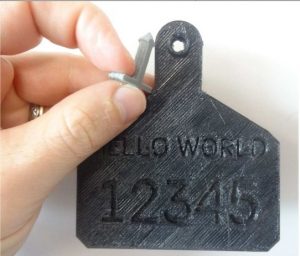Remote communities often face challenges in obtaining the supplies necessary for daily life, for the obvious reason of being isolated from traditional supply chains and manufacturing facilities. 3D printing has been proposed as a solution to this issue, allowing the people in these communities to manufacture their own goods and supplies and lessen their reliance on outside sources. Solar-powered 3D printers are especially useful in these communities, as they often have spotty access to electricity at best. In a paper entitled “Prospects of applying 3-D printing to economics of remote communities: reindeer herder case,” a team of researchers apply RepRap 3D printing to nomadic reindeer herders in indigenous northern communities.
These reindeer herders face an assortment of difficulties including isolation from industrial centers, extreme landscape and climate, and poor roads or even a lack of roads altogether. The researchers studied the use of low-cost, open-source 3D printers for these communities, and while the community can take advantage of millions of available open-source designs, the study focused on three reindeer-specific case studies: an ear tag, electric fence components, and a lasso accessory.
Indigenous communities, the researchers point out, are already using certain modern technologies such as computers and GPS, so there is a willingness to accept technology such as 3D printing. Indigenous people like reindeer herders are, by necessity, mechanically skilled, so RepRap 3D printers were chosen as they can be built and repaired by the user.
The first case study involves the 3D printing of ear tags, which are unique color-coded labels attached to the ears of reindeer, showing information such as their age and ownership. The design of the tags was made using OpenSCAD software.
“The design is dependent on a list of variables that can be changed to alter the design,” the researchers explain. “Two lines of text were placed in the design that can be altered to make unique identifying numbers or names for each tag, and can be quickly changed by the use of the variables. The text is recessed into the ear tag, to facilitate 3-D printing and to prevent the text from becoming unreadable. The text is also scaled to the dimensions of the ear tag, which can also be altered by the variables. It is possible, through the altering of variables, to make many completely unique ear-tags from one file.”
The design is composed of two parts: the tag itself and the peg used to hold it in place. The tag was 3D printed using TPE, and the peg was printed using PLA.
In the second case study, components are 3D printed for lightweight, temporary fences that are built for calving. According to the researchers, the most plentiful plastic components necessary for these electric fences are insulators. These components were also designed using OpenSCAD, and can be easily altered to change their dimensions, such as the wire retainer thickness and the diameter of the screw holes for attaching the component to a post. The insulators were 3D printed in PLA and made near solid for durability.
The third case study involved a lasso accessory, which would typically be made from hartshorn. The researchers designed the component in OpenSCAD and 3D printed it in PLA, once again allowing it to be altered easily to meet different needs for specific types of ropes.
Each of the case studies showed that 3D printing the components significantly decreased costs for the reindeer herders as opposed to buying them pre-made. The savings amounted to more than $2 million globally, or an average of $307 per herding group.
Authors of the paper include Svetlana V. Obydenkova, Nicholas C. Anzalone, and Joshua M. Pearce.
Discuss this and other 3D printing topics at 3DPrintBoard.com or share your thoughts below.
Subscribe to Our Email Newsletter
Stay up-to-date on all the latest news from the 3D printing industry and receive information and offers from third party vendors.
You May Also Like
Profiling a Construction 3D Printing Pioneer: US Army Corps of Engineers’ Megan Kreiger
The world of construction 3D printing is still so new that the true experts can probably be counted on two hands. Among them is Megan Kreiger, Portfolio Manager of Additive...
US Army Corps of Engineers Taps Lincoln Electric & Eaton for Largest 3D Printed US Civil Works Part
The Soo Locks sit on the US-Canadian border, enabling maritime travel between Lake Superior and Lake Huron, from which ships can reach the rest of the Great Lakes. Crafts carrying...
Construction 3D Printing CEO Reflects on Being Female in Construction
Natalie Wadley, CEO of ChangeMaker3D, could hear the words of her daughter sitting next to her resounding in her head. “Mum, MUM, you’ve won!” Wadley had just won the prestigious...
1Print to Commercialize 3D Printed Coastal Resilience Solutions
1Print, a company that specializes in deploying additive construction (AC) for infrastructure projects, has entered an agreement with the University of Miami (UM) to accelerate commercialization of the SEAHIVE shoreline...
































